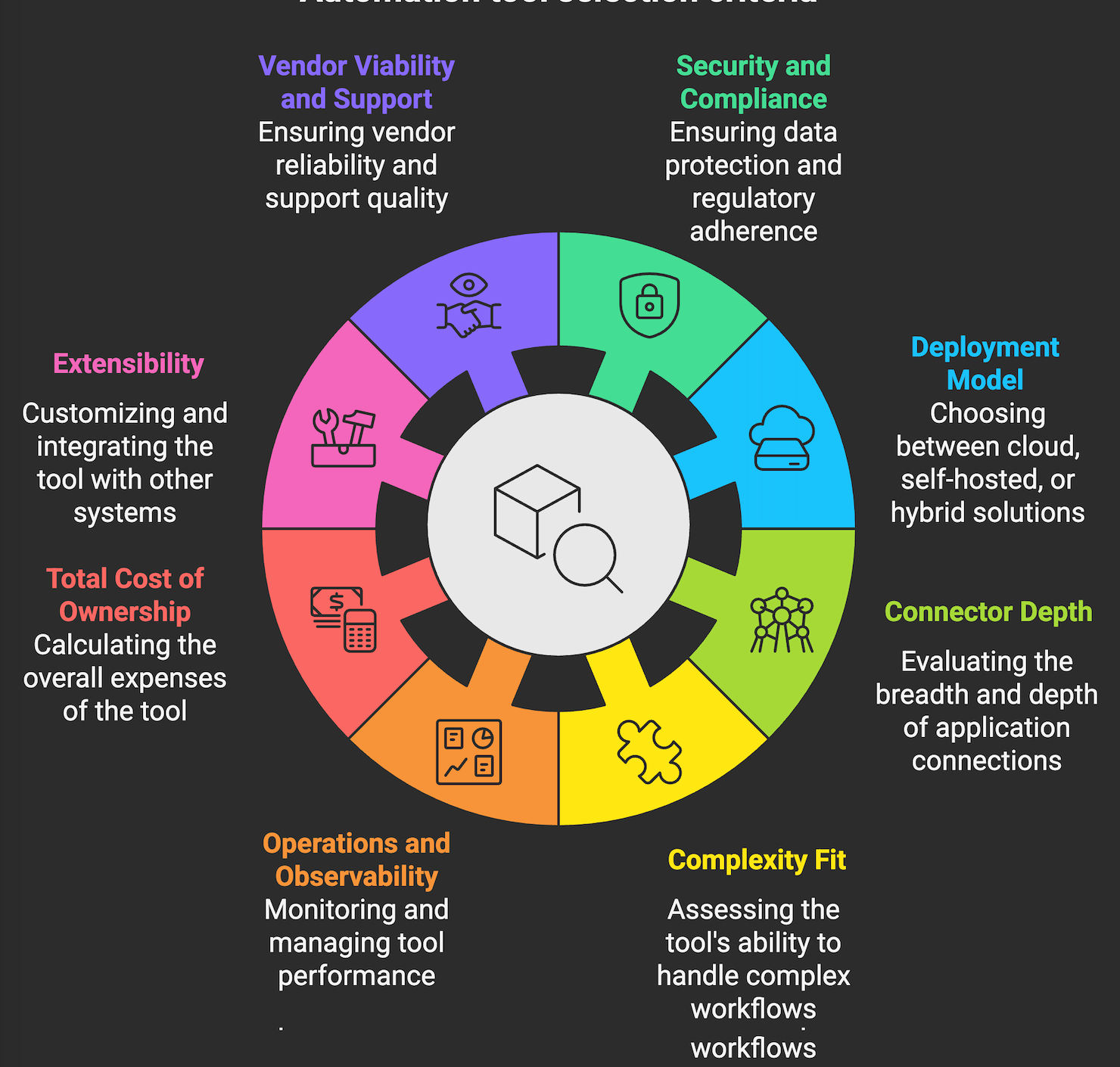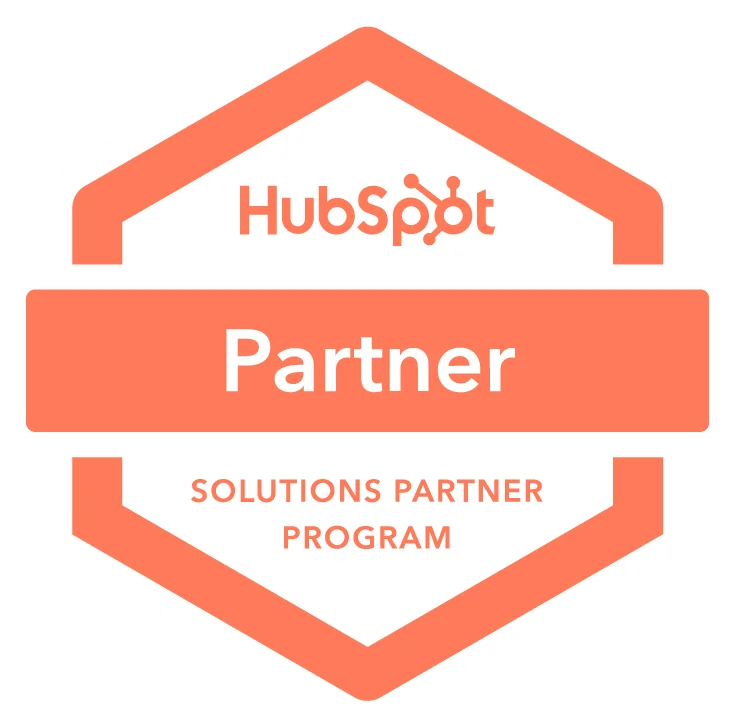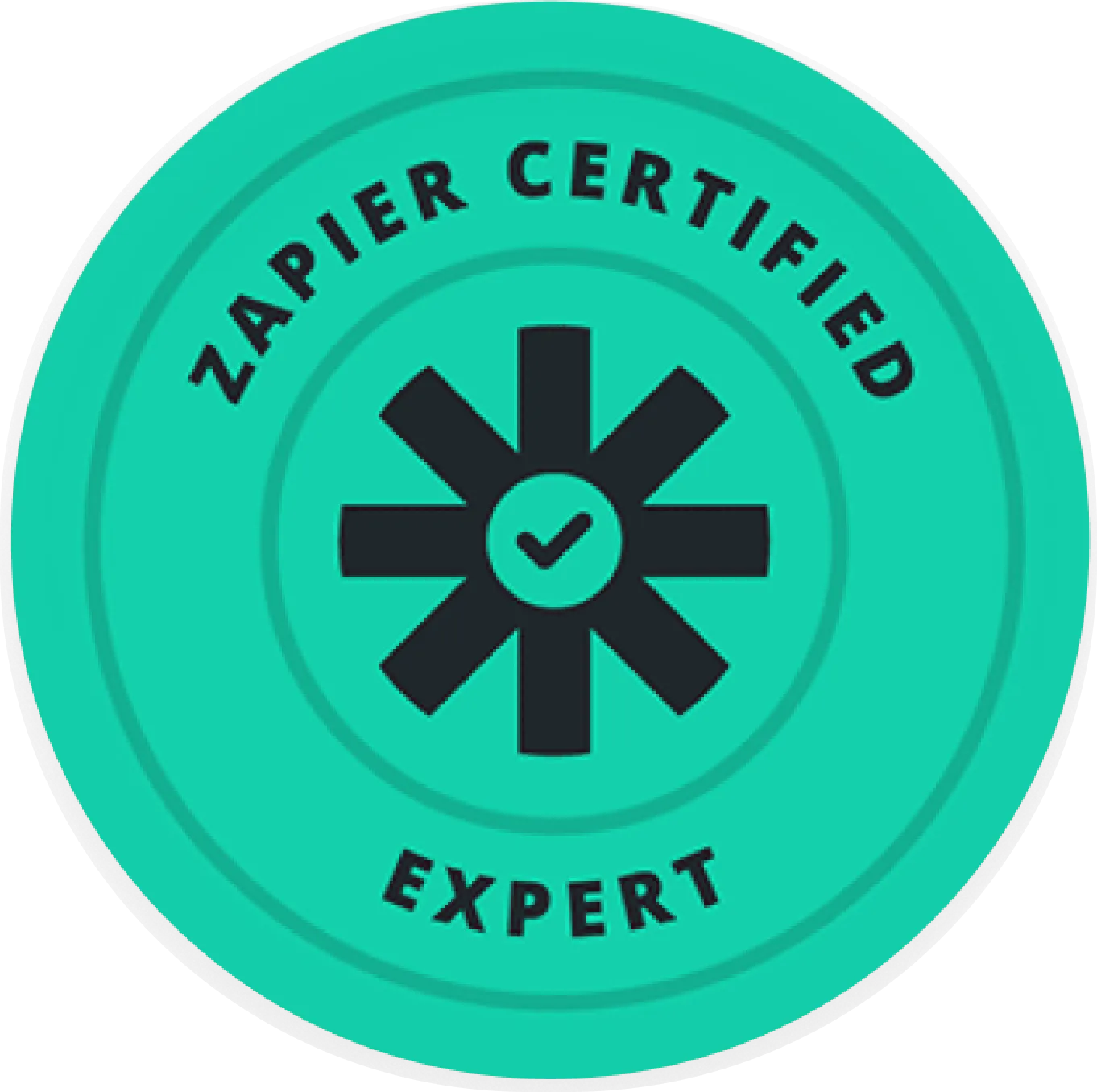If you are evaluating a Zapier alternative in 2025, this guide compares five serious workflow automation platforms for different needs, budgets, and governance requirements.. You will see where each tool fits, the trade offs to expect, and up to date pricing signals with links to verify.
We review Make, n8n, Pabbly Connect, Workato, and Integrately. For each, you will get core features, when to use it, pros and cons, and pricing. There is also a quick comparison table and a short buyer’s checklist so you can narrow to one or two candidates quickly.
WHY CONSIDER ZAPIER ALTERNATIVES?
Zapier is excellent for quick point automations, but you may outgrow it when scale, governance, or cost predictability matter.
- Limited control for complex logic and data transformation compared to visual flow builders designed for complexity. See Zapier’s multi step and pathing notes in Help Center.
- Polling triggers can introduce latency. Real time webhooks are app dependent and not universal.
- Task based pricing can get expensive at scale when workflows branch, loop, or retry. See plan limits.
- Enterprise guardrails like granular RBAC, environment promotion, on premise agents, and data residency are limited versus iPaaS platforms. See Zapier for Companies overview.
- Compliance and governance features such as detailed audit logs, secrets rotation policies, and change management are lighter than enterprise iPaaS norms.
1. MAKE
Make is a visual automation platform known for its canvas style builder, rich data manipulation, and advanced control structures like routers, iterators, and error handlers. It is suited to building complex, multi system workflows without writing code.
History and focus: Launched as Integromat in 2016 and rebranded to Make in 2022. It is known for an expressive, modular scenario builder and strong value per operation for teams that need complex logic and transformations.
Why it is an alternative to Zapier: More power on the canvas for branching, mapping, iteration, and bulk operations, usually at a lower cost per operation when you are moving and transforming lots of data.
Best use case: Marketing ops, RevOps, and product ops teams that need advanced routing and data shaping across apps, APIs, and databases, including scheduled jobs and real time webhook flows.
Pros for using Make:
- Visual canvas with routers, iterators, aggregators, and sophisticated mapping suited for complex automations.
- Native modules and generic HTTP, database, and webhook tools cover long tail integrations.
- Detailed execution logs and error handlers support robust retry and incident workflows.
- Good value per operation for data heavy workflows and batch runs.
- Growing AI modules and connectors that allow LLM steps inside scenarios.
Cons of Make:
- Learning curve. Power comes with more configuration compared with simple zap style builders.
- Operation based billing can be tricky to forecast if scenarios loop or iterate over large arrays.
- Enterprise governance, environment promotion, and SSO are improving but still lighter than top iPaaS platforms.
- App catalog smaller than Zapier for niche long tail apps, though HTTP modules can bridge gaps.
Available pricing options (2025):
- Free plan with limited operations and scheduling
- Core, Pro, Teams tiers from roughly 10 to 35 USD per user per month billed annually, plus Enterprise with custom terms
2. N8N
n8n is a source available workflow automation platform you can self host or use in the cloud. It combines a visual node based editor with first class code steps and extensibility, making it a favorite for technical teams that want control.
History and focus: Founded in 2019, n8n popularized an open, developer friendly approach to automation. The project is source available under the Sustainable Use License, with permissive use for most scenarios and restrictions on competing hosted services.
Why it is an alternative to Zapier: Data control and extensibility. You can self host, keep data in your VPC, build custom nodes in TypeScript, and avoid per task fees at large volumes.
Best use case: Teams that need on premise or VPC deployment, custom logic, Git based lifecycle management, and integration with internal systems or private APIs alongside SaaS apps.
Pros for using n8n:
- Self hosted option with full data control and no per task vendor charges.
- Code nodes and custom nodes enable complex logic beyond no code builders.
- Webhooks, cron, queues, and concurrency controls handle event and batch patterns.
- Active community and marketplace of nodes and templates.
- Good fit for ML and LLM workflows thanks to first class HTTP and code support.
Cons of n8n:
- Requires engineering time for setup, updates, monitoring, and security hardening.
- UI polish and turnkey templates are fewer than commercial no code tools.
- Governance features in self hosted require your own processes and tooling.
- Cloud plans add convenience but fewer enterprise integrations than top iPaaS vendors.
Available pricing options (2025):
- Self hosted: free to run under Sustainable Use License
- Cloud: Starter and Pro tiers from roughly 20 to 50 USD per month, Team and Enterprise with higher limits and SSO
3. PABBLY CONNECT
Pabbly Connect is a budget friendly no code automation tool with unlimited workflows, multi step automations, and a large library of ready made templates. It prioritizes affordability and simplicity for SMBs and agencies.
History and focus: Part of the Pabbly suite, which also includes subscription billing and email products. Known for aggressive pricing per task and frequent template driven use cases for marketing, CRM, and ecommerce.
Why it is an alternative to Zapier: Lower cost per task and unlimited workflows with many of the same popular app connectors, suitable for straightforward automations.
Best use case: Lead capture to CRM, email marketing automations, payment events to accounting, and other common SMB flows where price and simplicity matter more than advanced governance.
Pros for using Pabbly Connect:
- Very cost effective at moderate to high task volumes.
- Unlimited workflows across plans, helpful for agencies and multi brand setups.
- Large template gallery for one click setups.
- 1 minute scheduling on higher plans and instant triggers for many apps.
Cons of Pabbly Connect:
- Smaller app catalog and fewer deep connector features than Zapier or enterprise iPaaS.
- Less sophisticated debugging, versioning, and error handling for complex flows.
- Enterprise security, audit, and compliance options are limited compared to Workato or similar.
Available pricing options (2025):
- Free tier with limited tasks
- Paid tiers typically starting around 19 USD per month with task based scaling
4. WORKATO
Workato is an enterprise iPaaS that combines low code “recipes” with deep connectivity, on premise agents, robust governance, and enterprise scale observability. It is built for mission critical, cross departmental automations.
History and focus: Founded in 2013 by integration veterans, Workato is consistently recognized by analysts for iPaaS leadership and enterprise capabilities including security, lifecycle, and complex transformations. See Gartner’s iPaaS coverage for context.
Why it is an alternative to Zapier: Enterprise grade features such as on premise connectors, dev test prod environments, RBAC, approvals, data masking, and audit trails that align to IT governance and compliance standards. See Workato Trust Center.
Best use case: Large scale integration across ERP, finance, HR, support, and data platforms where security, controls, SLAs, and depth of connectors are non negotiable.
Pros for using Workato:
- Deep connectors for systems like SAP, Oracle, NetSuite, Salesforce, and ServiceNow.
- On premise agents and event streams for hybrid integration patterns.
- Enterprise governance: RBAC, environments, approvals, audit logs, and change controls.
- Strong monitoring, alerting, and reliability for critical workflows.
- Recipe accelerators, community packages, and customer success for enablement.
Cons of Workato:
- Premium price point oriented to mid market and enterprise budgets.
- Requires enablement and administrative ownership, not ideal for ad hoc one offs.
- Overkill for simple personal or small team automations.
Available pricing options (2025):
- Quote based, typically sold as recipe or workspace packages on annual contracts
- Business and Enterprise plans, with add ons for connectors and environments
5. INTEGRATELY
Integrately is a no code automation tool focused on speed to value with a large library of one click automations and an approachable builder. It targets SMB teams and agencies that want to launch many small automations quickly.
History and focus: Launched in 2020, the platform is known for its extensive ready made automation library and competitive pricing aimed at Zapier style use cases with less friction.
Why it is an alternative to Zapier: Cheaper and template first, with quick setup and solid coverage of common marketing and CRM scenarios.
Best use case: High volume of simple workflows across many clients or brands, where a template library and cost control matter more than complex logic.
Pros for using Integrately:
- One click automation templates reduce build time dramatically.
- Simple UI that non technical users can adopt fast.
- Competitive pricing for SMB task volumes.
- Good coverage of popular marketing, forms, CRM, and ecommerce apps.
Cons of Integrately:
- Fewer advanced controls and data transformation features than Make or n8n.
- Smaller connector depth and long tail coverage than Zapier.
- Limited enterprise governance and security features.
Available pricing options (2025):
- Free plan with basic limits
- Paid tiers starting roughly in the 20 USD per month range, scaling by tasks and features
QUICK COMPARISON ON ZAPIER ALTERNATIVES
Use this snapshot to shortlist two platforms to pilot. It highlights the sweet spot, deployment model, and what to watch for as you scale.
HOW TO CHOOSE THE RIGHT AUTOMATION TOOL?
Treat the decision as an integration strategy call, not just a feature checklist. Shortlist two options that match your governance and cost profile, then run a two week pilot with 3 to 5 representative workflows.
- Security and compliance. Data residency, SSO, RBAC, audit logs, and secrets management. Ask for documentation and third party attestations.
- Deployment model. Cloud only vs self hosted or hybrid with on premise agents for internal systems.
- Connector depth. Not just app logos. Evaluate object coverage, trigger types, webhooks, and API rate handling.
- Complexity fit. Does the builder support branching, iteration, variables, and reusable subflows without hacks.
- Operations and observability. Run history, retries, dead letter queues, alerting, and environment promotion.
- Total cost of ownership. Licensing, execution costs, infra if self hosted, and the team time to build and maintain. Validate with a pilot and real volume.
- Extensibility. Custom connectors, SDKs, code steps, and CI/CD or Git workflows for versioning.
- Vendor viability and support. Roadmap transparency, SLAs, and responsiveness on tier one issues.

HOW CAN MAKEITFUTURE HELP YOU WITH AUTOMATION?
Bottom line: There is no universal best zapier alternative. Choose Make for complex no code data transformations, n8n for control and self hosting, Pabbly Connect or Integrately for low cost SMB automations, and Workato for enterprise scale with governance.
We help leadership teams move from demos to measurable ROI. Our engagements typically run in three steps: 1, discovery and quick wins; 2, 30 day pilot with 3 to 5 workflows and clear success metrics; 3, scale up with governance, monitoring, and cost controls built in.
If you want a partner to evaluate, pilot, and deploy the right platform, we can help with vendor selection, architecture, and delivery.
Are you ready to talk with us? Start here.
Looking for proof points? Explore our automation case studies for RevOps, support, and back office modernization.














.png)
.png)



.avif)
